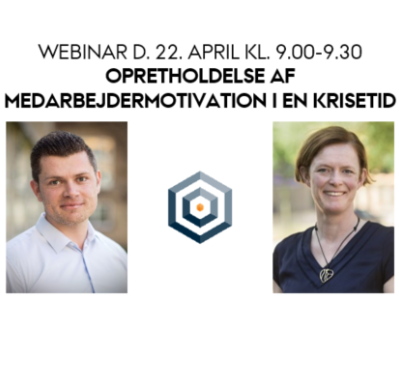From conference to webinar
How can you communicate your research and be in dialogue with the outside world, when the coronavirus crisis has put a stop to physical events? At the Crown Prince Frederik Center for Public Leadership, they have converted their annual leadership conference into an 8-week webinar series. Here, they share their best tips for how to make webinars.

In May, researchers from the Crown Prince Frederik Center for Public Leadership were to have met with approx. 400 public sector managers and employees from all over the country at the centre’s annual full-day conferences in Aarhus and Copenhagen.
When the coronavirus crisis closed down the country in March, the centre was like many others forced to cancel the physical conference. The important thing was then to convert the conference into another format as quickly as possible, Center Director Lotte Bøgh Andersen says:
“The objective of the entire centre is to strengthen public leadership in a close and ongoing dialogue with managers in the public sector. Therefore, it was very important for us to continue this dialogue even though we could not meet face to face.”
After careful consideration and a good dialogue with the target group, the centre decided to convert the leadership conference into a series of eight webinars each dealing with the theme “Leading in a time of crisis” from a new perspective. See the webinar series here.
Dialogue and involvement
Dialogue and involvement are important elements of the eight webinars which are all created in Zoom. They are structured as a conversation between one or two researchers from the centre and a host who sets the framework for the theme and continuously follows up on important points. In addition, during the webinars the participants are able to ask questions via the Q&A feature in Zoom.
“In the webinars, we convert our research into the reality that managers are facing right now,” Lotte Bøgh Andersen explains. “We will, among other things, address how to conduct good leadership and keep the employees motivated from a distance. These are questions that are critical to managers in this time of crisis and that we can provide research-based answers to.”
The centre’s administrative officer, Christian Nyvang Qvick, is host and also responsible for the practical execution of the webinar. He had no previous experience with webinars but after having seen a Zoom webinar on how to make webinars, he was well on his way. He is also responsible for the content-related planning in close cooperation with the participating researchers:
“The conversation format works very well,” he says. “Naturally, it requires that all parties are well prepared, but it makes the webinar far more dynamic. In general, it is important for us to communicate with the participants at eye level but also to be action-oriented so that they will be able to use the knowledge they gain in practice.”
Follow-up is important
All webinars are live sessions but recorded via Zoom and then edited by one of the centre’s employees so they can be placed on the centre’s website and LinkedIn profile. Thus, the first two webinars had as many as 539 live viewers and have since then had several hundred views.
After each webinar the centre uploads a short video on LinkedIn where a practitioner is discussing the specific subject with Lotte Bøgh Andersen. The centre also sends a Thank You for Participating email via Zoom where people can sign up for the centre’s newsletter and follow its LinkedIn page. So far, this has resulted in several new subscribers and followers, Christian Nyvang Qvick says.
Tips on how to make webinars
Lotte Bøgh Andersen and Christian Nyvang Qvick will here give their best tips to those of you who consider to use webinars.
Before you start:
- Ask the target group if they are interested in a webinar.
- Compose a team with clear areas of responsibility from the beginning. Who does what?
- Involve the researchers in the planning process from the beginning.
- See Zoom’s own webinar on webinars (link).
- Promote the webinar to your target group - on your own LinkedIn channel, if possible.
Form
- Consider using the conversation concept. It works well, if you are well prepared with regard to subjects and questions beforehand.
- Make sure that the maximum duration of the webinar is 30 minutes.
- Involve the live viewers via the Q&A feature in Zoom instead of the chat feature: In Q&A, the participants are able to “like” the questions that they would prefer to have an answer to.
Content
- Prepare yourself thoroughly. It is a good idea to make a script if you are using the conversation format where you agree on the overall themes and questions.
- Make it clear from the beginning what the webinar is about.
- Support the content visually by means of PowerPoint slides. As a minimum, use an introductory slide which sets the framework and a conclusive slide which summarises the most important points. Feel free to use slides during the webinar.
- Summarise the most important points during the webinar.